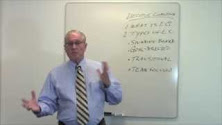
Principle #2. The Fulcrum and the Lever: Changing Your Performance by Changing Your Mindset
a. With a big enough lever, you can lift most anything. Just remember the seesaw in the schoolyard.
b. The “fulcrum” of your mindset allows you to lift yourself into happiness.
c. An experiment with 75-year old men on a retreat for a week: They were asked to act as if they were 20 years younger. All surroundings, even their own ID’s, were of 20 years ago. Results: Almost every measurement (strength, eyesight, posture and flexibility) increased.
d. Mindset: Placebos are 55-60% as effective as codeine and aspirin for controlling pain. The poison ivy experiment: Blindfolded and highly allergic people were told that a leaf was poison ivy and then their arms were rubbed with the leaf. While the leaf was not poison ivy, ALL 13 test subjects broke out in a rash.
e. Your mindset creates your world: Rather than be bored at a meeting, recast it into a “what can I learn” meeting. Reframe work, turn it into play and the world changes. Simply believing in our abilities changes our mindset and happiness. Identifying with our profession, not stereotypes of gender or ethnicity, can improve results. And identifying with the best of our profession or our highest attributes changes who we become.
f. Carol Dweck at Stanford found that people have either a fixed or growth mindset. Those with a growth mindset do better in school and in the future. When you believe that things will get better, you work harder and they do! It’s like the children’s story about the little engine that could.
g. Anne Wrzesniewski from Yale discovered that we have three mindsets about work: Job, Career, and a Calling. People with “Job” mindsets see it as work…plain and simple. “Career” folks see work as an opportunity to advance and succeed. But, those with a “Calling” mindset see work as something that draws on their personal strengths, contributes to the greater good, and is a purpose in and of itself. Reminding people about the meaning of their work moves them from being workers to stakeholders. Don’t ever forget this one if you want to maximize engagement and profit.
h. “Priming” people prepares them for success. In studies, maids who were reminded of the physical workout they get while cleaning lost more weight than other maids not similarly “primed.” Students reminded or “primed” about their intelligence do much better on tests. In one experiment, teachers were told that certain students were exceptional (but these students were actually average). At the end of the year, those average students tested off the charts as exceptional. The Pygmalion Effect is our belief in another person’s potential and actually helps make that potential become reality. Cultivate a positive (growth) mindset and watch your world change!
 Column 2: The Fearless Inventory
Column 2: The Fearless Inventory 



















